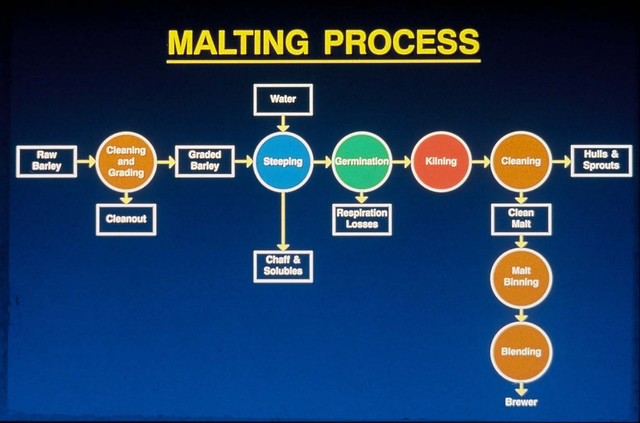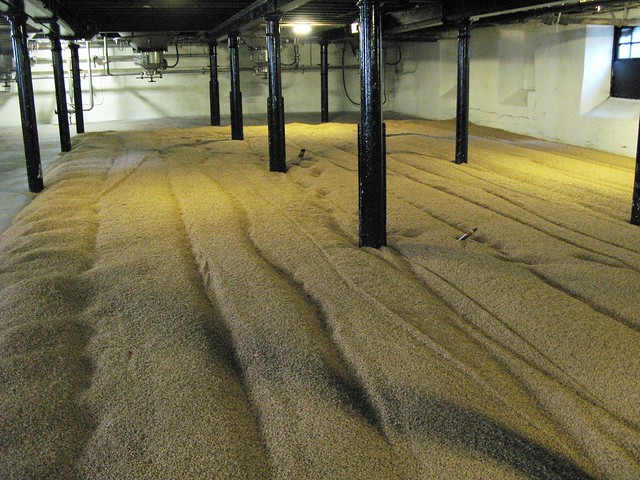
Today in 1963, US Patent 3085945 A was issued, an invention of Wayne W. Luchsinger and John G. Fleckenstein, assigned to the Kurth Malting Company, for their “Malting Process.” There’s no Abstract, although in the description it includes this summary:
According to the present invention there is provided a novel malting process which gives greatly increased malt recoveries and with other benefits which will be disclosed hereinafter. There is also provided a novel malt produced having substantially retarded, and/or essentially free of rootlets. This novel malting process broadly comprises acidulating a cereal grain, as well as contacting the cereal grain with a growth-stimulating amount of gibberellic acid, in the period from initial steeping to the growth or germination stage prior to any significant growth or germination, viz, usually within about 6 hours, and as much as 1 day, or slightly longer, after steep out, and thereafter completing the germination.
By acidulating is meant applying an acidic substance to the grain, such as by spraying or immersing the grain in an aqueous solution of the acidic substance to inhibit growth. Thus, the acidic substance can be incorporated in the steep water at any stage of the steeping operation or it can be applied to the grain at steep out or thereafter and before any significant growth or germination has resulted, viz, within about 6 hours and as much as 1 day or slightly longer after steep out. However, malt recoveries are generally progressively lowered as the acidulation treatment is delayed after steep out. Nevertheless, the malt recoveries generally obtained after such tardy or deferred acidulation are higher than without such treatment.
Acidulation without the addition of gibberellic acid to the grain inhibits growth but the grain is not converted to usable malt, especially at low pH values below 3.8. Gibberellic acid alone without acidulation promotes growth but losses due to respiration and rootlets are excessive.
Surprisingly, the combination of acidulation and gib- 4 untreated malt and, in fact, almost reaches the ultimate object of going from grain to malt without loss. The 1% loss in the aciduiated-gibberellic acid treated malt due to steeping and abrasion is presently considered unavoidable but negligible compared to the reduction in other losses.
The avoidance of wasteful rootlet formation in the process of this invention is particularly significant since the germinating grain (barley) is more readily stirred and because matting is avoided. The barley thus requires less volume during germination so that more barley can be malted with existing equipment than when rootlet growth takes place. For example, instead of germinating 250i) bushels in a bed, from 3500 to 4000 bushels can be germinated. The increased productive capacity leads to lower costs. Furthermore, the essentially rootlet-free malt produced according to this invention requires much less storage volume and transportation space than conventional malt with rootlets. In addition, this malt has a higher bushel weight than conventional malt after the rootlets are removed.
The reduction in loss due to respiration is also highly important, not only because of the waste of the kernel constituents which is avoided, but also because of the reduced amount of heat developed in respiration. This heat must be removed to maintain the grain at a proper malting temperature. Since less heat is evolved there is less to remove. Turning of the malt to avoid overheating thus can be reduced. There is also less expense involved in refrigeration since less cool air is needed to maintain the malting temperature.


